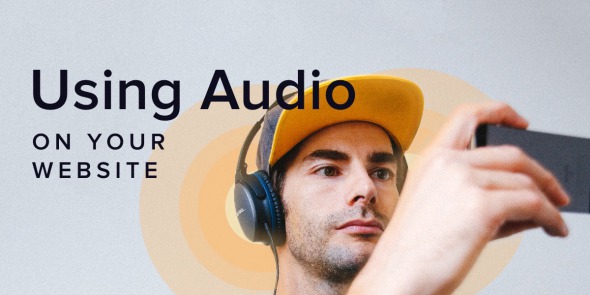
Improve Customer Experience With…Sound!

Bad Applications of Sound
We’ve all been to the website that sent us scrambling to find our computer’s mute button. Here are a few examples of when the sue of sound is a negative experience:
Overused — Although it can be tempting to get carried away, not every button, animation and tap of the screen needs to yield a sound effect. Users will quickly become irritated!
Autoplaying videos — In fact, noisy videos that play automatically are considered an intrusion by so many people that both Safari and Chrome block autoplay on all videos with sound.
No purpose — Ask yourself if the sound has a purpose or not. While sometimes fun effects can be appropriate, all applications of design — noise included — should be aiding the customer’s journey through your site.
Good Applications of Sound
There are appropriate uses of sound on your website; here are a few examples:
Interactions — Sound effects can help the user complete whatever it is they are trying to do on your site or web app, often providing reinforcement or additional information to the visual interaction. We recently developed a site that allows store employees to scan product barcodes to update store inventory. There are two sounds we implemented: a “success” sound when an item has been successfully scanned, and an “error” sound, when an incorrect barcode was scanned, or no barcode was found. The error sounds are paired with a helpful message telling the user why something could not be scanned. These sounds are similar to the ones your phone makes when you send a message or email, or take a photo.
Notifications — Because sound is processed using a different part of the brain than visual content, you can use sound to create awareness of something with minimal interruption of their main task; e.g. when your order was shipped, new messages have been delivered, or a download completed. If notification is a key functionality, the ability of sound to function even when the screen is off or another tab is open can be important.
Optional — Because sound can so easily overwhelm, annoy, or interrupt, provide users with the option to mute any persistent or repeating sounds. In addition, it’s not safe to assume that users have their phone, tablet, or computer's sound turned on — so your site or app should be designed to work seamlessly without any audio.
Adds dimension — In addition to being functional, a website’s sound can provide entertainment value without being too flashy. Our design team has been playing around with sounds that occur when a contact form is submitted, or information is saved, providing positive confirmation.
Accessibility — Even better is when you can implement sounds that will help those with accessibility issues. Those browsing the web with poor eyesight, for example, will better be able to access it with sound cues or a page reader, if you choose to provide those tools.Adds dimension — In addition to being functional, a website’s sound can provide entertainment value without being too flashy. Our design team has been playing around with sounds that occur when a contact form is submitted, or information is saved, providing positive confirmation.
Where to get sound effects
It’s a fine line, and one that designers often walk when implementing sounds into a website. Now that you’re inspired, here are some resources for free sound effects:
http://www.flashkit.com/soundfx/
http://www.audiomicro.com/sound-effects
https://icons8.com/sounds

